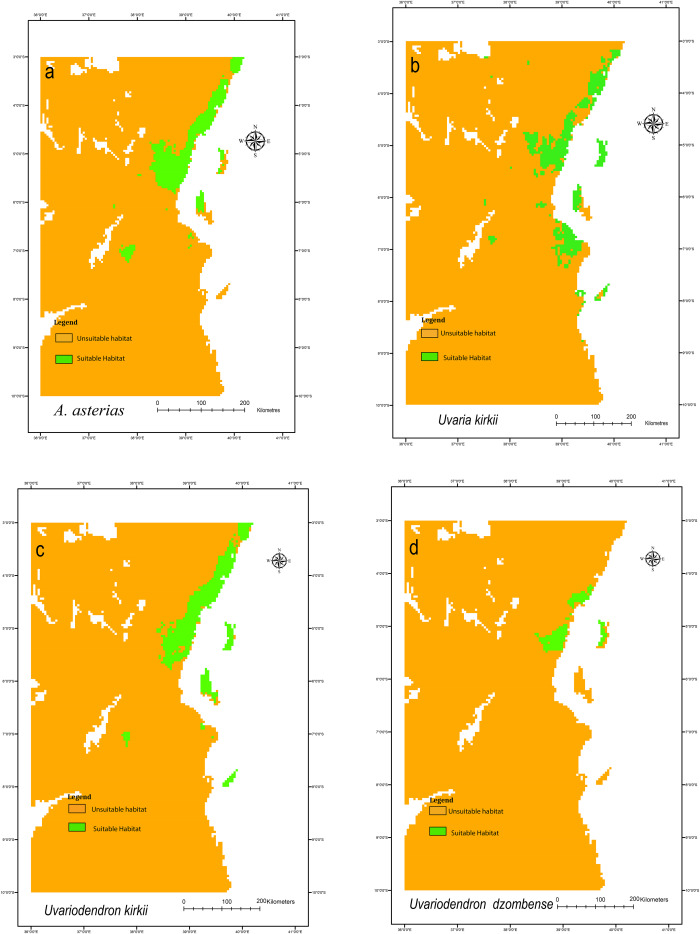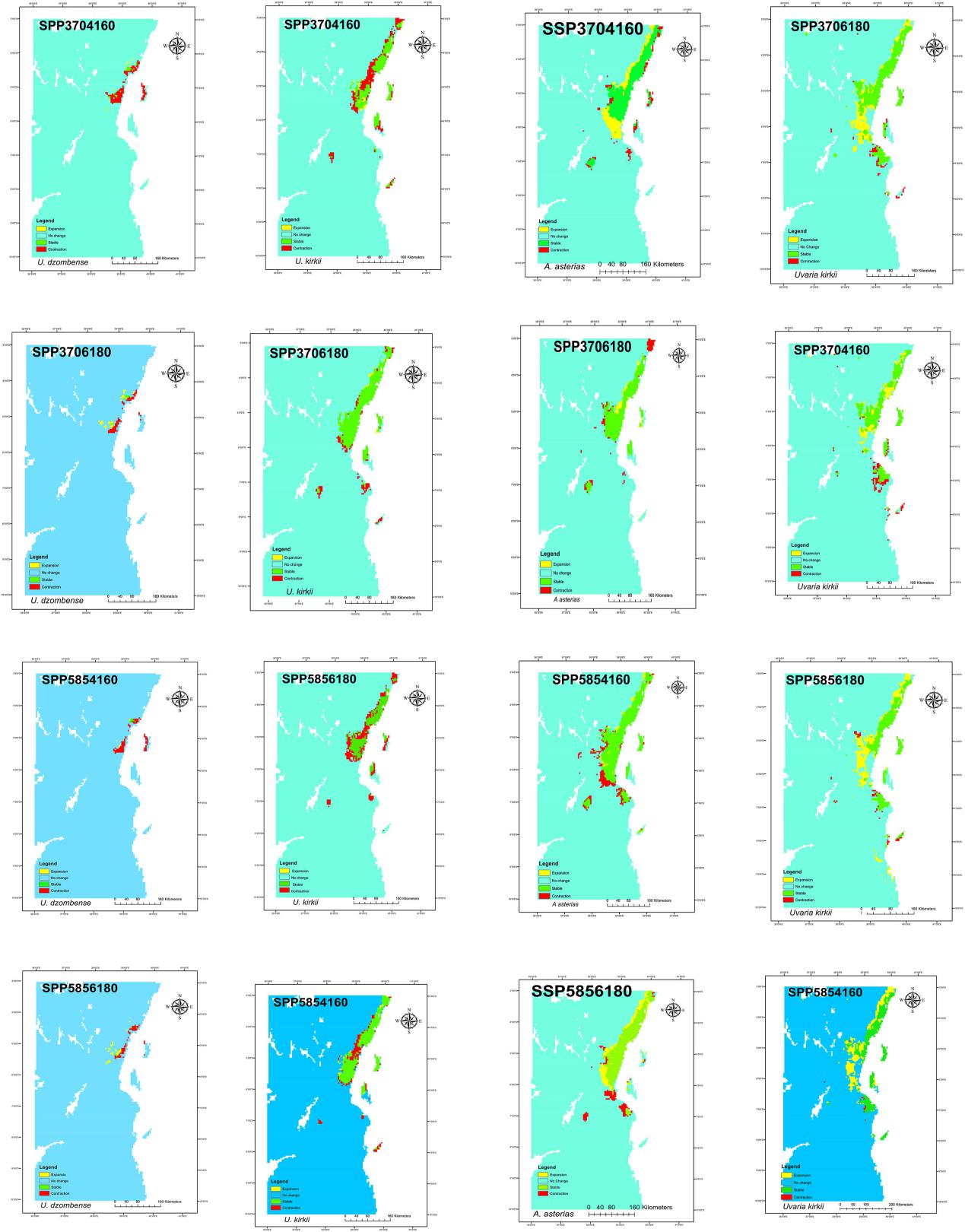Name:HU Guangwan
Tell:
Email:guangwanhu@wbgcas.cn
Organization:Wuhan Botanical Garden
Research Predicts Potential Impacts of Climate Change on the Endangered Endemic Annonaceae Species in East Africa
2023-09-14
The unique geography of East Africa has given rise to endemic plant groups, and the region is characterized by a large number of "The Eastern Arc Mountains", where at least 800 species of vascular plants are endemic to East Africa, with trees accounting for about 10% of the total. The endemic flora of the region not only creates unique relict ecosystems but also preserves the evolutionary history of the species, but the ranges of the endemic flora are threatened by a number of factors.
Climatic conditions are one of the main factors affecting species ranges, and climate change may affect the geographic ranges and original habitats of many plants at high risk of extinction, while endemic plant groups in East Africa are vulnerable to climate change due to their low biocomplexity, which could change the geographic ranges and habitats of plant groups. In addition, anthropogenic factors may also affect the distribution of species, and the endemic medicinal value of the Annonaceae family has led to the overexploitation of its habitats, resulting in its extinction.
The research team led by Prof. HU Guangwan from Wuhan Botanical Garden simulated the distribution of suitable habitats for four endemic endangered Annonaceae in East Africa, using the Australian Community Climate and Earth System Simulator version 1 (ACCESS-CM2) general circulation model of coupled model intercomparison project phase 6 (CMIP6) to model the current distribution of suitable habitat for the four threatened Annonaceae species endemic to East Africa (EA), and to determine the impact of climate change on their suitable habitat in the years 2050 (average for 2041–2060) and 2070 (average for 2061–2080) .
Two shared socio-economic pathways (SSPs) SSP370 and SSP585 were used to project the contraction and expansion of suitable habitats for Uvariodendron kirkii, Uvaria kirkii, Uvariodendron dzomboense and Asteranthe asterias endemic to Kenya and Tanzania.
Results show that the current distribution for all four species is highly influenced by precipitation, temperature, and environmental factors (population, potential evapotranspiration, and aridity index). Although the loss of the original suitable habitat is anticipated to be significant, appropriate habitat expansion and contraction are projections for all species. More than 70% and 40% of the original habitats of Uvariodendron dzombense and Uvariodendron kirkii are predicted to be destroyed by climate change, so that the above areas can be considered as priority conservation areas.
These results predict the contraction and expansion of the original habitats of Annonaceae species and provide important information for achieving conservation of important Annonaceae species habitats.
This study was supported by the International Cooperation Programme of the Chinese Academy of Sciences, the National Natural Science Foundation of China, and the China-Africa Joint Research Centre of the Chinese Academy of Sciences, The research results were published in Heliyon with the title of "Predicting the potential impacts of climate change on the endangered endemic Annonaceae species in east africa".

Fig. 1. Currently projected habitat suitability maps indicate the distribution of the species along Kenya and Tanzanian coastlines (Image by WBG)

Fig. 2. The projected future suitable habitat distribution areas for the four Annonaceae species in East Africa (Kenya and Tanzania) projected using SSPs scenarios (SSP370 and SSP585) for the averaged years in 2050 (average for 2041–2060) and 2070 (average for 2061–2080) (Image by WBG)